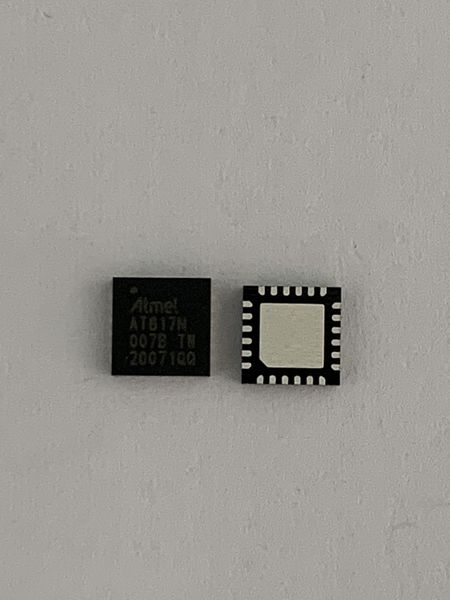The ATTINY817-MN is an 8-bit microcontroller from Microchip Technology, featuring 8KB of flash memory. Below are additional specifications regarding this microcontroller:
- Manufacturer: Microchip Technology
- Part Number: ATTINY817-MN
- Type: MCU (Microcontroller Unit)
- Architecture: 8-bit AVR MCU
- Flash Memory: 8KB
- RAM: 512B
- Operating Voltage Range: 1.8V to 5.5V
- Package/Case: 24-QFN (Quad Flat No-leads)
- Features: 20MHz precision internal oscillator, 18 programmable I/O lines, 16-channel 10-bit ADC, Event System, Configurable Custom Logic (CCL), 24-bit real-time counter, Peripheral Touch Controller (PTC), USART, SPI, TWI (I2C), 16-bit Timer/Counter, 24-bit Timer/Counter
-
DataSheet ATTINY817-MN PDF
Purpose:
The ATTINY817-MN is ideal for a range of compact, low-power, and cost-sensitive embedded applications, where a balance between performance and energy efficiency is crucial.
Applications:
This microcontroller is suitable for various applications including:
- Sensor interfacing and control
- IoT (Internet of Things) devices
- Wearable electronics
- Portable and battery-powered devices
- Smart home automation
- Consumer electronics
- Industrial control
Development and Prototyping:
Microchip provides a comprehensive development ecosystem for this microcontroller family, featuring Atmel Studio, Xplained Mini evaluation kits, and peripheral boards, as well as various support documents and example code.
Features:
The ATTINY817-MN features a Peripheral Touch Controller (PTC), aimed at simplifying the integration of capacitive touch functionality into designs. Furthermore, it includes a Configurable Custom Logic module along with the Event System, offering a high level of versatility and customization.
Low-Power Operation:
As with many of Microchip's microcontrollers, this model supports various low-power modes, making it suitable for battery-operated or energy-efficient electronics.
This microcontroller can be an excellent choice for developers seeking a compact, low-power yet versatile microcontroller solution with advanced features. It is always advisable to refer to the latest datasheets and documentation to ensure the MCU's applicability for a specific project.




